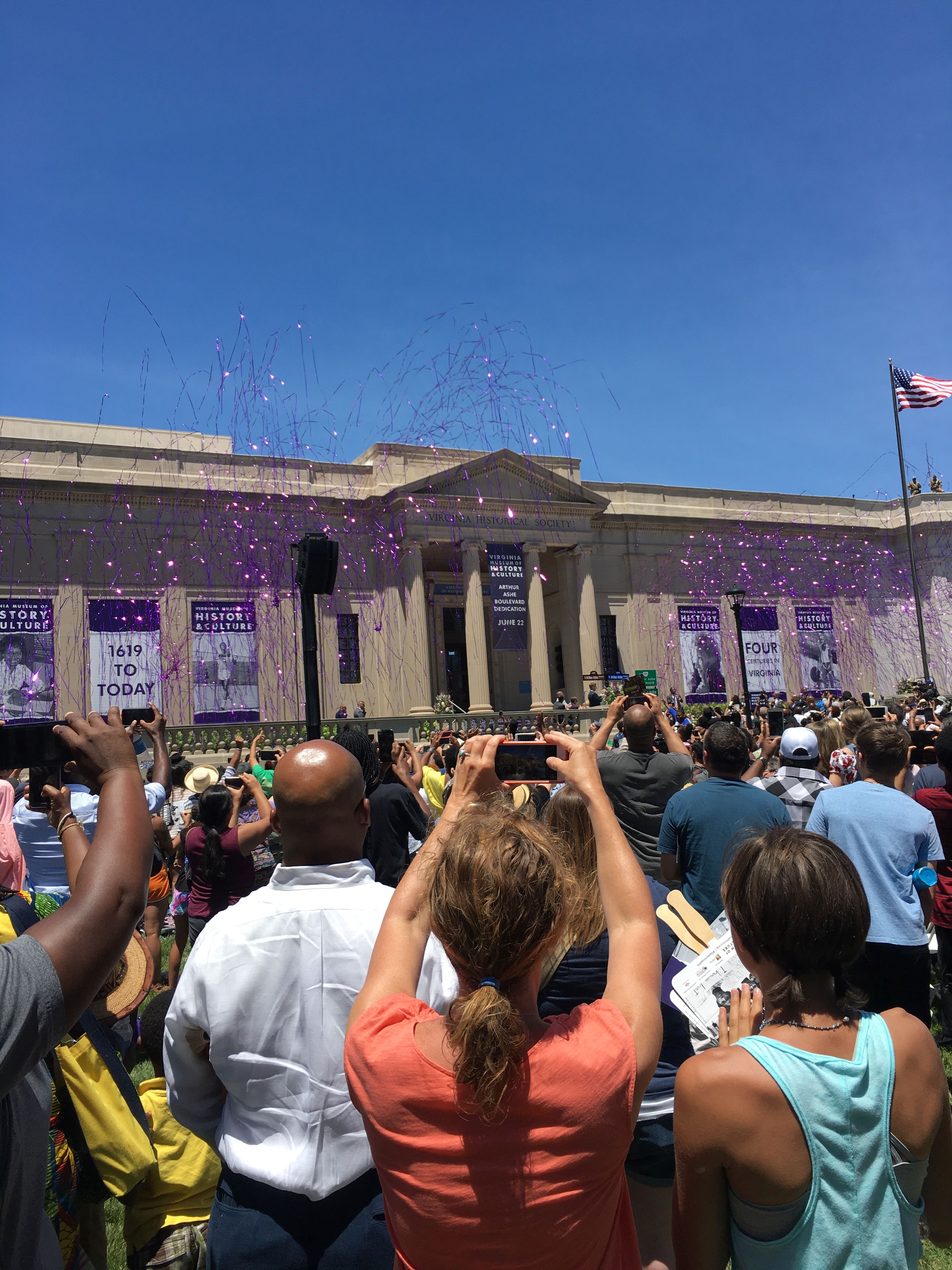by Meghna Melkote
Meghna Melkote is a rising sophomore from Scranton, Pennsylvania majoring in Political Science and Philosophy and minoring in Music. This is her first summer working with the Race & Racism Project as a member of Team Archive. She is involved with the Mock Trial and Debate teams, performs in chamber music ensembles, is a member of the Phi Alpha Delta Pre-Law Fraternity, and is a content curator for public history platform bunkhistory.org.

On June 21st, 2019, the New York Times published an essay by reporter Kurt Streeter about the re-naming of a major road in Richmond, Virginia. Amidst the hum of debate surrounding how to handle existing Confederate monuments nationwide, the city council of the former capital of the Confederacy voted to rename a major street formerly known as “Boulevard” to “Arthur Ashe Boulevard”. Arthur Ashe was a record-breaking tennis player, civil rights supporter, and writer whose nephew led the charge to commemorate his uncle. While this change was brought about by activists and a strong city council in Richmond (there was an 8-1 vote in favor of it), the publication of this story in the New York Times shows that this brand of cities reckoning with their history is not unique to Richmond. I had the opportunity to attend the official dedication of the boulevard on June 22nd, 2019. The event was held at the Virginia Museum of History and Culture, and coincided with the opening of their new exhibit “Determined: The 400-Year Struggle for Black Equality”.
The dedication featured a star-studded lineup of speakers (well, star-studded enough for fans of politics). Key speakers included Mayor Levar Stoney, Senator Tim Kaine, and Congressman John Lewis. Each of their speeches seemed to instill energy into the Boulevard itself. Stoney, with a trademark vitality, remarked that it was time to celebrate “a true champion in Richmond”, who excelled both on the tennis court, but also “on the world stage for civil rights and for racial equality.” Senator Kaine referenced the importance of names, drawing parallels to the power to name given in the Bible; he also mentioned his time on Richmond City Council. He discussed the opposition and debate surrounding the state of Arthur Ashe on Monument Avenue, and praised the work done by City Councilwoman Kim Gray in blazing the trail forward for this work to be done. Congressman Lewis, the keynote speaker, abandoned his prepared speech and spoke of activism. Congressman Lewis discussed his own history in fighting for Civil Rights, including the times when he was arrested and beaten. He spoke of trouble; more specifically, he encouraged activists to get in trouble and fight for what is right and what is just. Music provided a meaningful interlude to the speeches of the day, with performances by the Elegba Folklore Society and the Mount Zion Baptist Church Choir.
As an avid follower of American politics, this event was stirring in the speakers that offered their words. I have always admired Congressman Lewis, and to hear him speak in a place so mired in its own history about how to change the status quo was moving. This story was itself a narrative of self determination. It was brought about by people who were determined to create a narrative existing, literally, alongside that guaranteed by Monument Avenue. This narrative was not created, but brought to light. It was an underlying story that was forced to exist among the predominant narrative. It was brought about by Ashe’s nephew David Harris Jr. And Councilwoman Kim Gray and all those who pushed for the legislation to rename the Boulevard. And of course, part of the power that accompanied the event was the knowledge that I witnessed an act of change. It allowed me to bear witness to something that defied the narratives so often surrounding the capital of the Confederacy.
The event was, to describe it in a world, powerful. However, though the atmosphere engendered fellowship among attendees, it was hard to forget the war that plagued Richmond just 150 years ago. After all, we cannot forget that Arthur Ashe Boulevard, for all its glory, cuts through a street lined with statutes of Confederate Generals. Taking down statues will not erase the legacy of oppression that plagued Richmond. We can take down statutes, but as Streeter wrote in his essay, “painful memories are stitched into the fabric of the city”.
